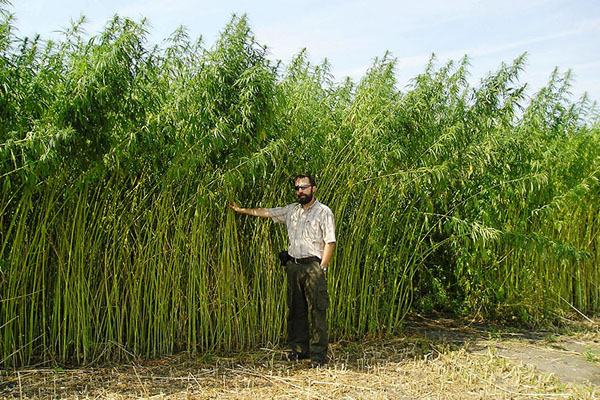|
|
How Is Hemp More Environmentally Sustainable Than Cotton On Water Use Pesticides, Herbicides, Or Water Use?
There are a variety of reasons hemp is considered to be a sustainable plant if you compare it to cotton when it comes to water use as well as insecticides and herbicides.
Hemp- Hemp has a relatively low requirement for water compared to other crops, like cotton. Hemp is a drought-resistant, low-irrigation plant. In a lot of locations, hemp is planted with only rainwater. This is why it is a good choice for water use.
Cotton- Combed cotton is renowned for its extensive use of water. The cotton farming process is usually irrigated extensively, which can deplete water resources in the area and lead to water scarcity. The high demand for water in cotton farming has led to concerns about its sustainable nature.
Herbicides and Pesticides-
Hemp - Hemp's natural resistance to a variety of pests, diseases and weeds reduces the use of synthetic pesticides. Although some hemp plants may require limited pest management measures however, the total dependence on chemical inputs is less than many other crops, including cotton. The organic hemp crop can be grown almost pesticide free.
Cotton- Conventional cotton farming heavily rely on synthetic pesticides, herbicides, and weed killers to manage pests. These chemicals have negative effects on the natural environment. This includes soil and water contamination and also harming animals that aren't targeted, as well as pesticide resistance.
In the end hemp is regarded as to be a more sustainable plant than cotton in terms of the use of water, pesticides and herbicides.
Hemp can be grown using only a little water, rainwater or irrigation.
Hemp is naturally invulnerable to disease and pests and helps reduce the need for pesticides.
Hemp production uses less synthetic pesticides compared to cotton.
It is essential to keep in mind that the practices of sustainable farming and environmental protection may differ from one region or cultivator to another. Organic farming practices can also improve sustainability by cutting down on the usage of synthetic chemical and improving soil quality. Concerning the impact that clothing and textiles have on the environment, using organic, sustainable fibers like cotton or hemp could reduce this footprint. Read the recommended hemp clothing url for more tips including mens hemp clothing, patagonia volley shorts, hemp shorts mens, jungmaven t shirt, hemp jeans mens, hemp jacket, hemp active wear, hemp shirts wholesale, hemp wear, patagonia ranch jacket, and more.

What Are The Benefits Of Hemp Fibers In The Sequestration Of Carbon, Sustainability And Crop Rotation?
Hemp fibers are a major contributor to carbon storage, sustainability, and crop rotation in a variety of ways. They are an excellent option for agricultural and textile production.
Fast growth- Hemp is a fast-growing plant that matures in approximately 70 to 120 days, dependent on the variety and growth conditions. In their rapid growth phase, hemp absorbs carbon dioxide from the air through photosynthesis. This carbon uptake contributes significantly to carbon sequestration through decreasing the levels of CO2 in our atmosphere.
Hemp is a plant with a large biomass production. The thick foliage of the plant and its tall stalks yield an incredible amount of organic matter. When incorporated into the soil or utilized to make various products, can help to build up of carbon.
Sustainability:
Hemp is grown with lesser chemicals than cotton or other crops. Its natural resistance reduces its necessity for chemical interventions. Organic hemp farming, particularly is a sustainable approach, avoiding synthetic chemicals altogether.
Hemp has an excellent water-efficiency particularly when compared to traditional cotton. This helps hemp to be more durable in areas that have scarce water resources.
Hemp roots are deep and may aid in improving soil quality. The hemp's roots help to reduce soil erosion by stabilizing soil's structure and reducing runoff. Hemp cultivation also increases soil fertility by enhancing microbial soil activity.
Hemp is a great crop to incorporate in rotation systems. Crop rotation refers to the method of rotating between different crops in a single field. This can help to break pest and illness cycles, reduce depletion of soil and enhance soil structure. Hemp's role in crop rotation can contribute to sustainability.
The rotation of the crop-
Hemp is also a good addition to crop rotations alongside other crops, such as vegetables, legumes or grains. This helps farmers maintain soil quality, reduce the risk for diseases, pests and other crop-specific problems, and promote a balanced process of nutrition.
Hemp roots penetrate the soil and aerate it, which reduces compaction and improves the infiltration of water. The soil's structure is improved after the harvest of hemp that benefits other crops.
In short hemp fibers enhance the carbon sequestration process, sustainability, and crop rotation practices due to their rapid development, production of biomass, minimal chemical requirements, water efficiency, positive impact on soil health, and their compatibility with crop rotation methods. These characteristics make hemp production sustainable and a regenerative farming practice. The fibers that result can be utilized for textiles, as well as other applications that are eco-friendly. Have a look at the top rated go here on hemp clothes for website recommendations including hoodlamb jacket, hemp yoga pants, hemp garments, hemp pants, hemp baja hoodie, hemp jeans, organic hemp clothing, hemp sweatpants, hemp sweatshirt, hemp button shirt, and more.

What are the differences in bamboo and hemp fibers?
Bamboo and hemp are plant-based fibres used to produce textiles. Each one has distinct properties and characteristics. These are the key differences in hemp and bamboo fibers. Plant Source-
Hemp Fibers- Hemp fibers can be derived from hemp stalks, and more specifically, the bast that is outside. Hemp is a multi-faceted and rapidly-growing plant, has been grown throughout the ages in various ways.
Bamboo Fibers- Bamboo fibers come from the pulp. Bamboo is fast-growing species of grass, known for rapid renewal and durability.
2. Fiber Characteristics
Hemp Fibers- Hemp's fibers are extremely durable and sturdy. Hemp fibers are among the strongest natural fibers, and soften after washing, making them suitable for textiles that last a long time.
Bamboo Fibers- Bamboo fibers are known for having a soft, silky feel. They're not as durable as hemp fibers and can be more delicate, but they are valued because of their softness against the skin.
3. Texture Feel, Look and Texture-
Hemp- Hemp fabric has an extremely rough and textured texture, especially in its natural state. It's soft and comfortable, however the texture is different than bamboo.
Bamboo- Bamboo fabric is soft, silky and luxuriously soft. It is often compared with silk, which is a blend of twill, making it extremely comfortable.
4. Breathability, Moisture Wicking and Breathability-
Hemp Fibers- Hemp fibers help to absorb water and are naturally and breathable. They keep you cool and dry in hot weather.
Bamboo fibers are also able to absorb humidity and are highly air-tight. Micro-gaps in the fabric enhance the ability of bamboo to regulate humidity and temperature which allows you to remain at ease in all conditions.
5. Environmental Impact-
Hemp- Hemp fiber is an environmentally-friendly plant because of its low water requirement rapid growth, and resistance to pests. This means that it is less need for pesticides and herbicides. It is able to sequester CO2 from the atmosphere while it grows.
Bamboo is renowned for being eco-friendly. It is extremely durable, grows rapidly and needs only a tiny amount of water. Some bamboos are considered sustainable, such as Moso bamboo.
6. Processing-
Hemp Fibers- Hemp fibers undergo extensive processing, which is needed to separate the bast that is outside from the wood core. Processing may include decoration, retting, or mechanical separation.
Bamboo fibres- Bamboo fibres are usually obtained by an enzymatic process known as the viscose or rayon procedure. This involves breaking down the bamboo pulp using chemicals. If it is not managed properly the process can be detrimental to the natural environment. However some bamboo fabrics utilize closed loop systems to reduce the amount of waste.
7. Versatility-
Hemp- Hemp fibres can be used for a variety of purposes, such as clothes, textiles and even paper. They are also great building materials.
Bamboo Fibers- Bamboo fibres are utilized mostly in textiles and clothing, but they can also be found in other items like bedding and towels.
Both bamboo and hemp are distinct and offer benefits for sustainability. The choice between them depends on the specific characteristics and features you are looking for in a product made of textiles and your environmental preferences. Follow the most popular one-time offer for blog recommendations including bamboo clothing, bamboo pants, bamboo sun hoody, bamboo pants for women, bamboo twirl dress, bamboo fitness clothing, kate quinn bamboo, halloween bamboo pajamas, ladies bamboo t shirts, short sleeve bamboo pajamas, and more.
 |
|